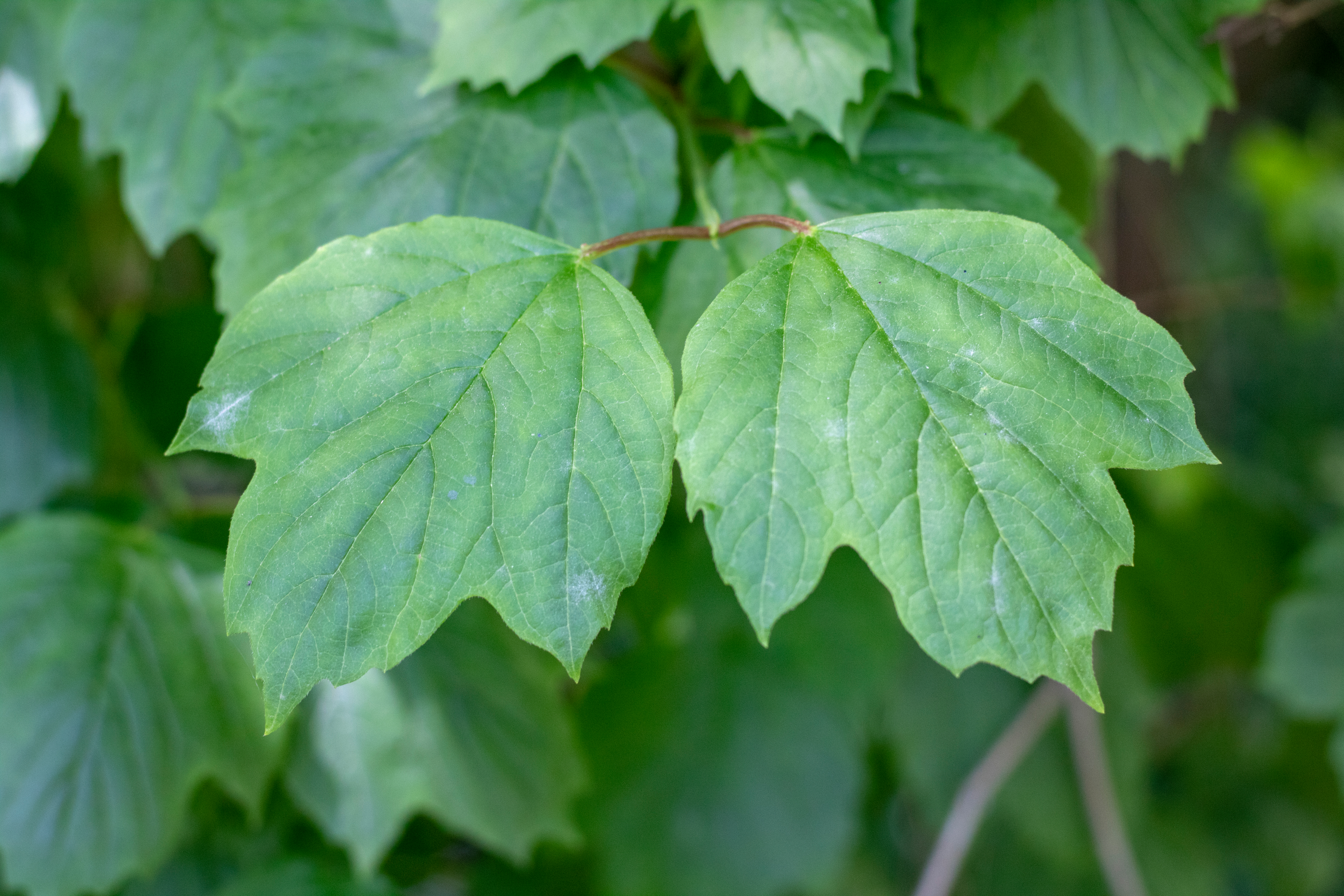Mapleleaf viburnum
(Viburnum acerifolium)

Description
Viburnum acerifolium, commonly known as mapleleaf viburnum, is a deciduous shrub belonging to the family Adoxaceae. It is native to the eastern regions of North America, ranging from Quebec to Florida, and from the Great Lakes to the Mississippi River. This plant is named for its leaves, which resemble the leaves of the maple tree. Description and Characteristics Mapleleaf viburnum typically grows to a height of 3-6 feet, with a spread of 4-6 feet. It has an upright, multi-stemmed habit, and produces a dense, rounded crown. The plant has a moderate growth rate, and typically lives for 30-40 years. The leaves of mapleleaf viburnum are simple, opposite, and palmately lobed, with 3-5 lobes. They are dark green and glossy on the upper surface, and lighter and slightly fuzzy on the underside. The leaf margins are serrated. The foliage turns a reddish-purple in the fall, adding to the plant's ornamental value. In late spring to early summer, mapleleaf viburnum produces clusters of small, white flowers at the ends of the branches. The flowers are fragrant and attract pollinators such as bees and butterflies. The fruit that follows is a small, round, blue-black drupe, which matures in late summer to early fall. The fruit is attractive to birds and other wildlife. Cultivation and Growing Conditions Mapleleaf viburnum is relatively easy to grow and requires minimal maintenance. It prefers well-drained soils that are rich in organic matter, but can tolerate a range of soil types. It is tolerant of drought and shade, but performs best in partial to full sun. The plant can be propagated from seed or by softwood cuttings taken in the summer. Uses and Benefits Mapleleaf viburnum is a popular landscape plant, prized for its attractive foliage, showy flowers, and fruit. It is often used as a specimen plant or in mixed borders, and also works well in mass plantings or as a hedge. The plant is also useful for erosion control on slopes or along streams and ponds. In addition to its ornamental value, mapleleaf viburnum has a number of other benefits. The leaves and fruit are a source of food for wildlife, including birds, deer, and small mammals. The plant has also been used in traditional medicine to treat a variety of ailments, including fever, inflammation, and digestive problems. Conclusion Overall, Viburnum acerifolium is an attractive and useful plant that is well-suited to a variety of landscape settings. Its ornamental qualities, ease of cultivation, and ecological benefits make it a valuable addition to any garden or natural area. Whether you are looking for a low-maintenance shrub with year-round interest or a plant to attract wildlife, mapleleaf viburnum is an excellent choice.
Taxonomic tree:







